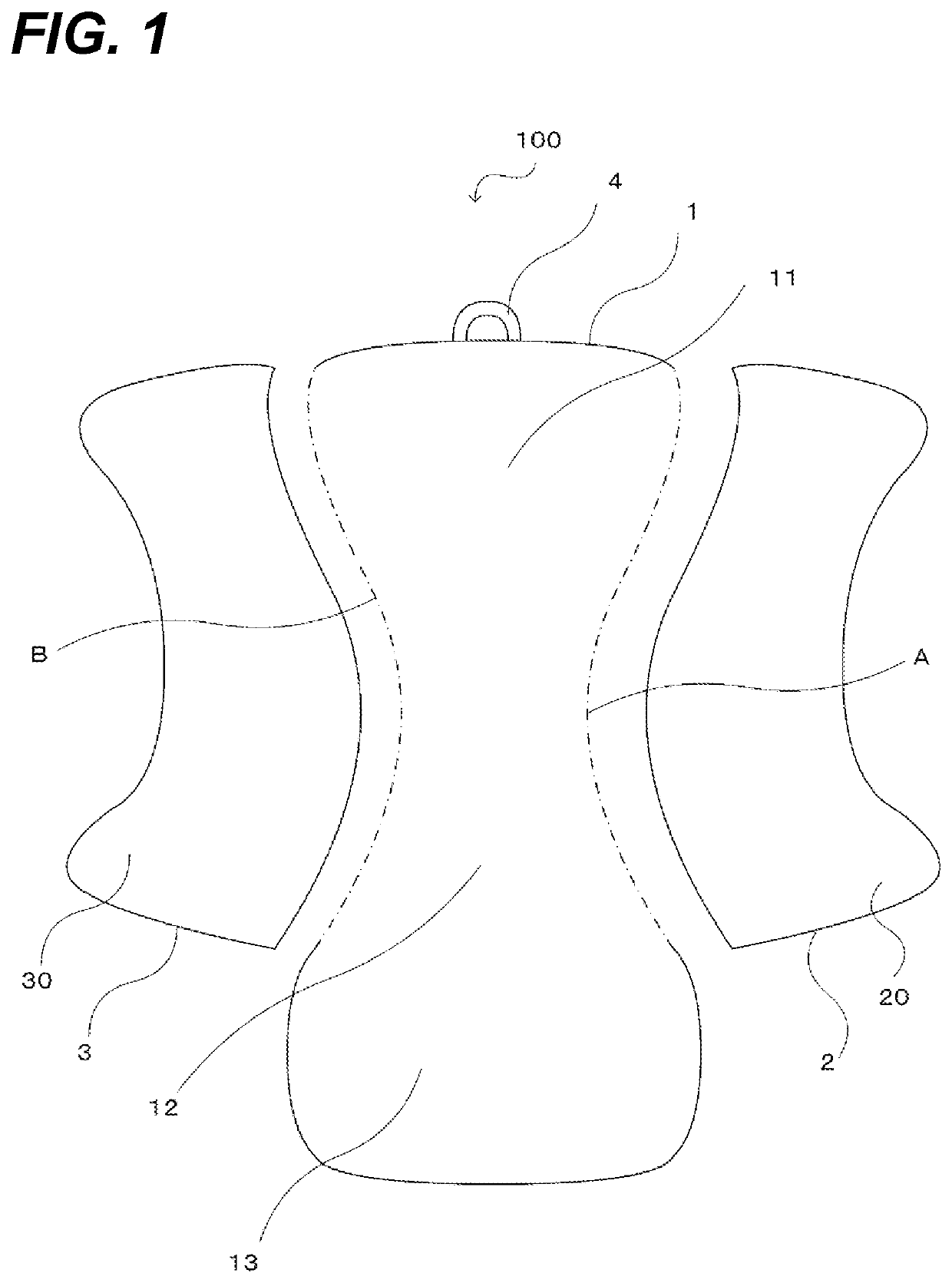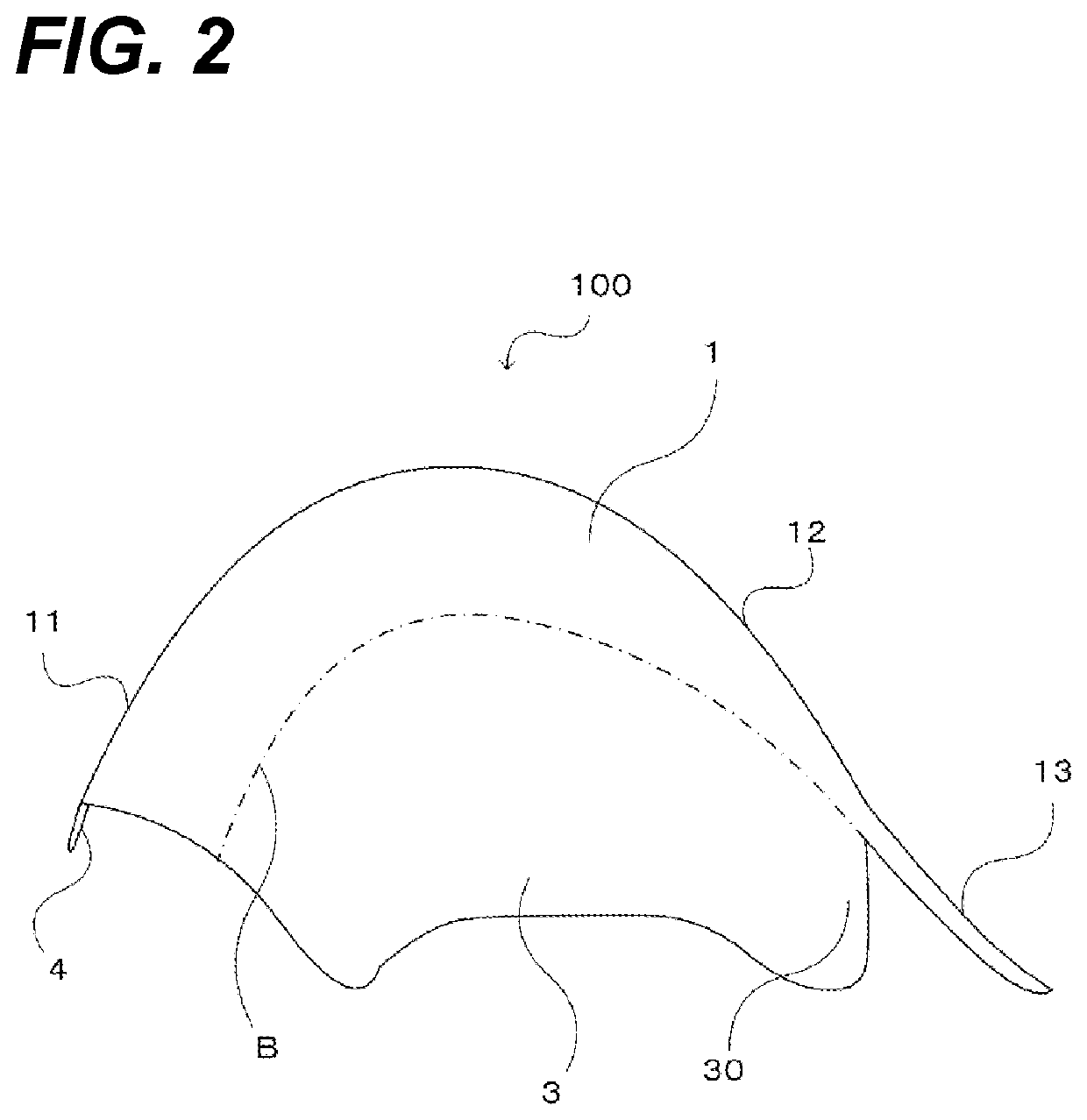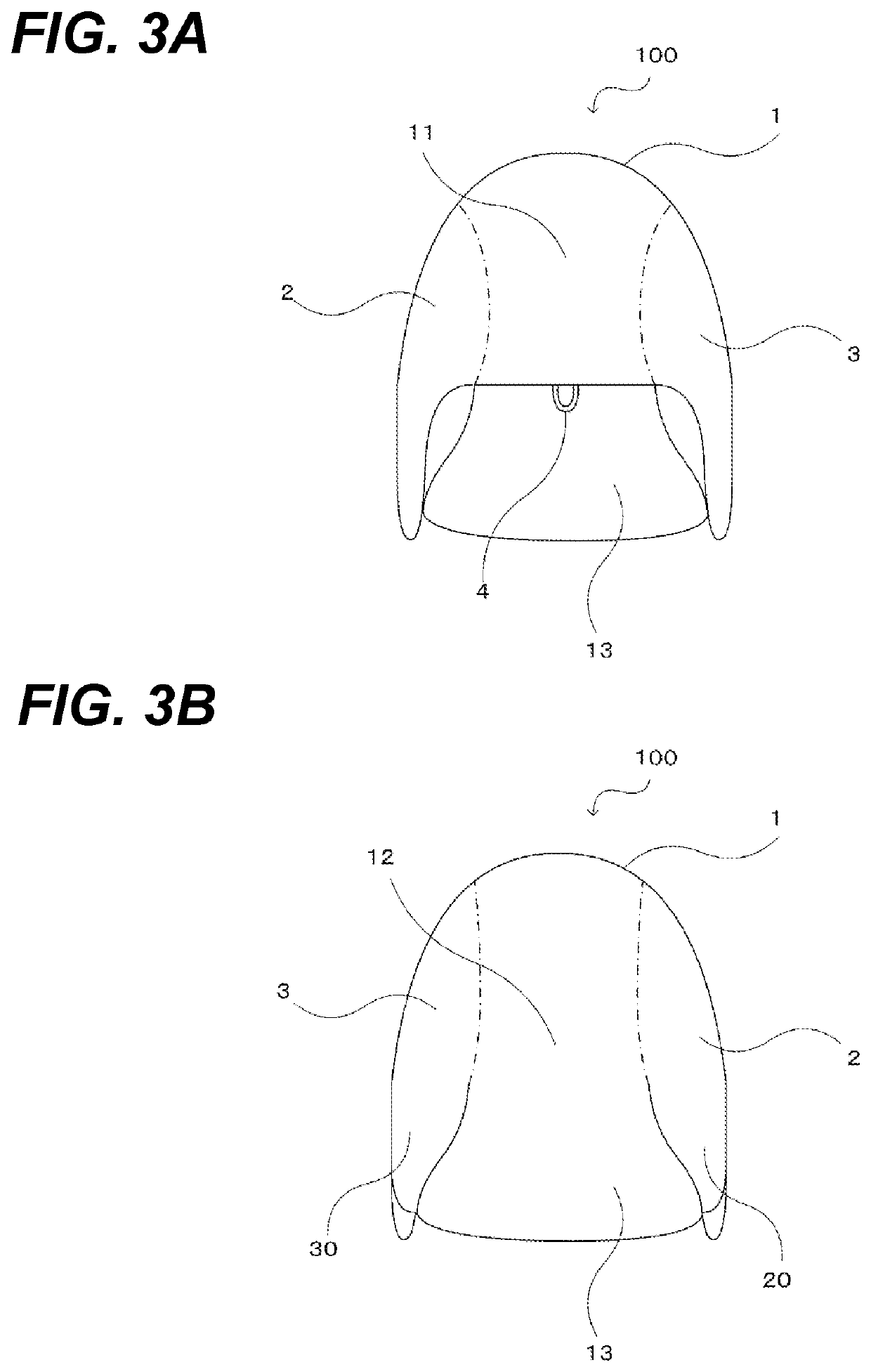Easy-Fitting Coif for Scalp-Cooling Cap
a technology for scalp and cooling cap, which is applied in the field of head coverings, can solve the problems of hair loss, difficult to bring the heat-exchanging cap into close contact with the entire head, and patients' psychological distress and other significant lowering of quality-of-life, and achieve the effect of stable wearing state and less likely to deteriora
- Summary
- Abstract
- Description
- Claims
- Application Information
AI Technical Summary
Benefits of technology
Problems solved by technology
Method used
Image
Examples
Embodiment Construction
[0032]Hereinafter, embodiments of the invention will be described in detail with reference to the drawings. In each of the drawings, the same parts are denoted by the same reference numerals and repeated description will not be provided. It should also be noted that the drawings may be exaggerated for the purpose of understanding the invention and are not necessarily drawn to scale. Further, the invention is not limited to the examples illustrated below.
[0033]An exemplary embodiment will be described in detail with reference to the drawings. FIG. 1 is an opened-out view of a chemotherapeutic coif, which is constituted by a fabric body defining inner and outer surfaces, according to the invention. FIG. 2 is a right-side view of the chemotherapeutic coif according to the invention. FIG. 3A is a front view of the chemotherapeutic coif according to the invention, and FIG. 3B is a rear view thereof. FIG. 4 is a view illustrating a state in which user has fitted on a chemotherapeutic coif...
PUM
 Login to View More
Login to View More Abstract
Description
Claims
Application Information
 Login to View More
Login to View More - R&D
- Intellectual Property
- Life Sciences
- Materials
- Tech Scout
- Unparalleled Data Quality
- Higher Quality Content
- 60% Fewer Hallucinations
Browse by: Latest US Patents, China's latest patents, Technical Efficacy Thesaurus, Application Domain, Technology Topic, Popular Technical Reports.
© 2025 PatSnap. All rights reserved.Legal|Privacy policy|Modern Slavery Act Transparency Statement|Sitemap|About US| Contact US: help@patsnap.com



